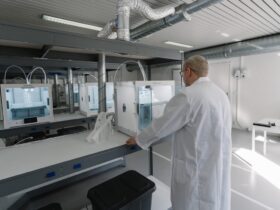The Power of Linux in Digital Health
Welcome to our blog all about the incredible impact that Linux is having on the world of digital health! In this post, we’ll explore the important role that Linux plays in driving innovation and advancing healthcare technology. From electronic health records to medical imaging, Linux is at the forefront of the digital health revolution. So, let’s dive in and discover the fascinating intersection of Linux and digital health!
The Incredible Growth of Digital Health
Did you know that the global digital health market is projected to reach a staggering $379 billion by 2025? This unprecedented growth is driven by the increasing adoption of digital solutions in healthcare, including electronic medical records, telemedicine, wearable devices, and health apps. With Linux serving as the foundation for many of these technologies, its impact on the digital health landscape cannot be overstated.
Linux: The Backbone of Digital Health Infrastructure
One of the key strengths of Linux in the digital health realm is its open-source nature. This means that developers have access to a wealth of tools, libraries, and resources to build innovative healthcare applications and systems. From secure data management to seamless interoperability between different devices and platforms, Linux provides a robust and reliable foundation for digital health infrastructure.
Security and Privacy in Digital Health
Security and privacy are paramount in the healthcare industry, and Linux excels in providing a secure environment for sensitive medical data. With robust built-in security features and a community-driven approach to addressing vulnerabilities, Linux helps ensure that patient information is protected from cyber threats and unauthorized access.
Customizability and Flexibility
Another compelling aspect of Linux is its customizability, allowing healthcare organizations to tailor their digital health solutions to specific needs and workflows. Whether it’s optimizing performance for medical imaging systems or integrating real-time data from IoT devices, the flexibility of Linux empowers innovation and scalability in digital health applications.
How Linux is Revolutionizing Digital Health
Electronic Health Records (EHR) Systems
Electronic health records are central to modern healthcare delivery, and Linux-based platforms form the backbone of many EHR systems. With Linux powering EHR applications, healthcare providers can efficiently manage patient records, streamline clinical workflows, and ensure seamless communication across departments.
Medical Imaging and Diagnostic Tools
In the realm of medical imaging and diagnostics, Linux-based solutions are driving significant advancements. From PACS (Picture Archiving and Communication System) to advanced imaging algorithms, Linux plays a crucial role in rendering high-quality visualizations, enabling accurate diagnoses, and supporting medical research and education.
Embracing Linux in Your Daily Life
Now that we’ve explored the profound impact of Linux in digital health, you might be wondering how you can embrace this technology in your daily life. Whether you’re a healthcare professional, a tech enthusiast, or simply someone interested in leveraging digital health tools, here are a few ways to incorporate Linux into your world:
Exploring Open-Source Health Apps
Discover the wealth of open-source health and wellness apps that are built on Linux platforms. From fitness trackers to nutrition planners, open-source health apps offer a great opportunity to experience the benefits of Linux in managing personal well-being.
Contributing to Digital Health Projects
If you have a passion for both technology and healthcare, consider contributing to open-source digital health projects. Whether it’s coding, testing, or providing feedback, your involvement can help shape the future of digital health solutions powered by Linux.
Learning About Healthcare IT and Linux
For those interested in pursuing a career at the intersection of healthcare IT and Linux, there are numerous educational resources available. Explore online courses, certifications, and community forums to deepen your understanding and expertise in this exciting field.
In Summary
As we wrap up our exploration of the intersection of Linux and digital health, it’s clear that Linux is a driving force behind the transformative innovations taking place in healthcare technology. With its emphasis on security, flexibility, and open collaboration, Linux is empowering the development of cutting-edge digital health solutions that are revolutionizing patient care, research, and healthcare delivery.
So, whether you’re passionate about improving healthcare through technology or simply intrigued by the potential of Linux in the digital health space, there are endless opportunities to engage with this dynamic and impactful intersection. Keep exploring, learning, and innovating, and together we can continue to shape the future of digital health powered by Linux!
















